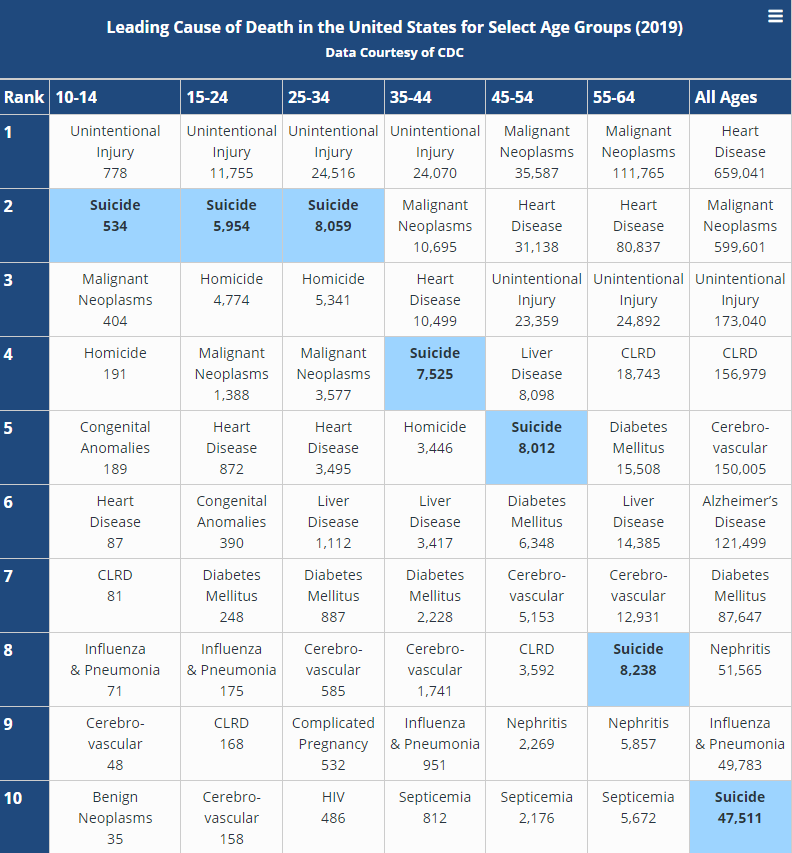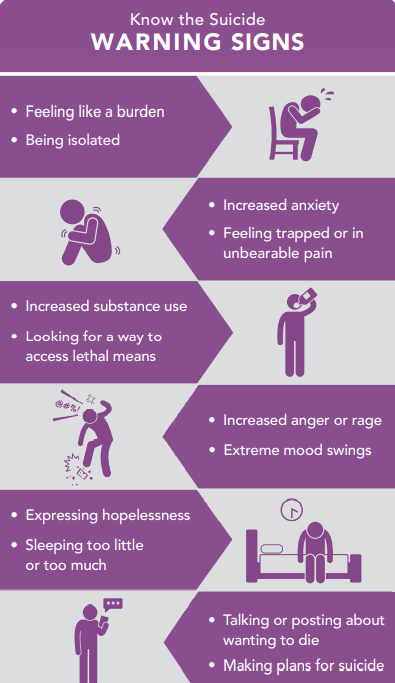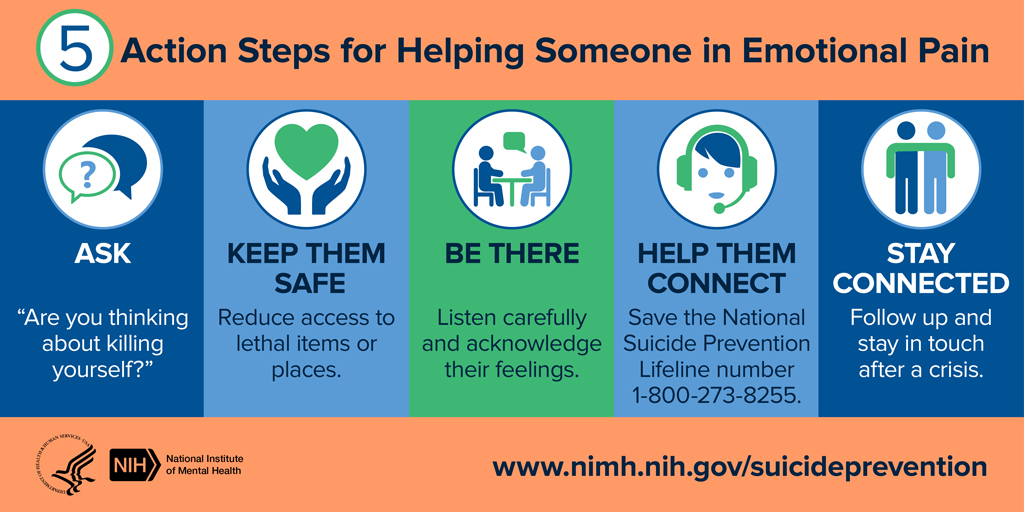September: Suicide Prevention Month
Trigger Warning: This blog talks about suicide and suicidal ideation. This is a heavy topic. You might need longer to read through and process all the information in this post. Give yourself the time and space to do so.
We often shy away from talking about suicide. It can be a trigger for some. It might cause feelings of sadness, fear, anger, and even confusion.
However, the best way to prevent suicide is to become educated and talk about it.
This blog is a limited attempt to facilitate both.
Suicide is the 10th leading cause of death in the United States. It is even higher among younger populations, the 2nd leading cause of death among those between the ages of 10 and 34.
The suicide rates have been steadily climbing since 1999, increasing a total of 35.2% from 1999 to 2018.
It is important understand that there is a difference between suicide and suicidal ideation. According to the National Institute of Mental Health, suicide is defined as, “death caused by self-directed injurious behavior with intent to die as a result of the behavior.” They have also defined suicidal ideation as, “thinking about, considering, or planning suicide.”
This means that a person may have suicidal ideation, but may not be actively suicidal. It is best to let a professional determine this difference, as it can be difficult to tell.
Risk Factors
Risk factors are factors that create a higher likelihood that someone might consider, attempt, or die by suicide. It is important to look for potential risk factors in those around you. Some of these are listed below.
- Mental Health Diagnosis
- Substance Use Disorder
- Presence of Hopelessness
- Impulsive or aggressive tendencies
- History of trauma or abuse
- Previous suicide attempts
- Family history of suicide
- Job or financial loss
- Lack of healthcare and mental health treatment
- Lack of social support and a sense of isolation
- Access to lethal means
It is also very important to keep in mind that these risk factors do not cause suicide, but only contribute to the likelihood of someone considering or attempting suicide.
Warning Signs
Warning signs are things that someone might be exhibiting or experiencing that can be an indicator of suicidal ideations and possible suicide attempt. These can include, but are not limited to:
- Talking about wanting to die or kill themselves
- Searching for or obtaining means to harm or kill themselves
- Talking about being hopeless
- Expressing that they have no reason to live
- Discussing feelings of feeling trapped
- Talking about being in unbearable pain
- Talking about being a burden to others
- Increasing use of substances
- Sleeping too little or too much
- Isolating themselves from others
- Extreme mood swings
Action Steps
So what happens if you are aware of the risk factors and start noticing the warning signs from someone you know? Great question! The National Institute of Mental Health gives FIVE action steps for helping others.
- ASK – “Are you thinking about killing yourself?”
- KEEP THEM SAFE – Reduce access to lethal items or places.
- BE THERE – Listen carefully and acknowledge their feelings.
- HELP THEM CONNECT – Give them the National Suicide Prevention Lifeline number or help them get connected with a mental health professional.
- STAY CONNECTED – Follow up and stay in touch.
If you see any of those warning signs in someone you know, the best thing to do is ask. The National Institute of Mental Health suggests asking, “Are you thinking about killing yourself?” This question can be hard and uncomfortable, but remember, it is the first step in getting your loved one the support and care they need.
Reducing their access to lethal means is an incredibly important step. This can look like removing firearms, locking up medications, or taking their car keys. Removing these lethal means immediately increases their safety.
Following with a listening ear is just as important. Listen to how they are feeling, what they are going through, and ensure them that they are not alone. Then, get them connected with someone. This can be the National Suicide Prevention Lifeline number or a local clinician.
Additional links, resources, and numbers.
Here are some additional resources that provide more information and education.
National Suicide Prevention Lifeline 1-800-273-8255
Crisis Text Line 741741
National Institute of Mental Health Website: www.nimh.nih.gov/health/topics/suicide-prevention
#BeThe1To Website: Home – #BeThe1To
Suicide Prevention Lifeline Website: Talk To Someone Now : Lifeline (suicidepreventionlifeline.org)
CDC Suicide Website: Suicide rising across the US | VitalSigns | CDC
Some things to remember.
Suicide is a very difficult, sad, and often painful topic. However, due to the rising rates of suicide, it is important to know how to recognize both the risk factors and warning signs of suicide. Speaking up when you see those warning signs is very difficult and uncomfortable, but has the potential to change the life of someone you know.
Offering a listening ear might make all the difference to someone experiencing suicidal ideation and/or contemplating suicide. If you are unsure of what to say or how to respond, just validate their feelings and emotions. Let them know they are not alone.
It is also important to know that you will not always notice the warning signs. This is in no way an attempt to put the responsibility on you for the decision someone else makes with their own life. Our only responsibility is to love others well through the good times and the hard times.




